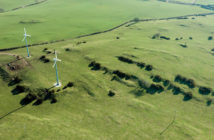Farmers, landowners and land managers may struggle to access post-Brexit environmental subsidies unless they deploy new tools to identify and measure their natural capital
As landowners, estate managers and farm businesses adapt to the new post-EU subsidy regimes and the 2020 Agriculture Act across the UK, they must prepare to provide robust evidence of environmental improvements and enhancements. To demonstrate this, they need an accurate natural capital baseline.
To meet this need, Oxford-based NatCap Research Ltd. has launched NatCapMap, the first comprehensive online environmental mapping tool in the UK to help landowners, estate managers, farm businesses and others to quickly and easily identify and measure their natural capital assets, and then report improvements over time. This baseline then provides a rock-solid basis for the development of ESG, biodiversity and net zero carbon strategies.
NatCapMap can be accessed at https://www.natcapresearch.com/latest-tools
Created by internationally reknowned academics using world-leading modelling and data techniques, the online tool enables users to map their natural capital assets, and receive the information in a downloadable report. The tool also maps the ‘ecosystem service flows’ provided by those assets – that is, the benefits for human wellbeing provided, such as carbon storage, CO2 sequestration, flood risk reduction, recreation, biodiversity, and others.
New subsidy frameworks require robust evidence
According to Professor Kathy Willis, founder and director at Natural Capital Research, “Post-EU subsidy arrangements are still evolving across the UK, but it’s already clear that landowners, estates and farmers will need the highest-quality evidence of natural capital assets and ecosystem system flows to access public funding. NatCapMap provides such evidence for land across England, Scotland and Wales, providing a powerful environmental business planning tool for estates and farms of different sizes.”
One key focus of the team at NatCap Research is to help landowners and land managers prepare for the Agriculture Act 2020, which sets out the new post-Brexit approach for agriculture support in England. For landowners and farmers in England, it represents the biggest change to the subsidy regime since the 1970s, with the EU’s per hectare basic farm payment (BFP) being superseded by the principle of “public money for public goods” and the transition to the Environmental Land Management Scheme in 2024. NatCapMap also then sets a solid baseline for the development of landowners’ environmental enhancement strategies going forward.
Professor Sir Dieter Helm, founder and chair of Natural Capital Research, continues, “Under this new framework, landowners will need to evidence their natural capital baseline to claim subsidies effectively. The private sector too – from shareholders to ESG investors to carbon markets – as well as NGOs and other stakeholders will increasingly want rock-solid evidence of natural assets and environmental baselines and enhancements. With our reports providing accurate detail down to 25 metres, NatCap Map provides the credible evidence base that is needed for all these different audiences. And it then provides the credible starting point for initiating and monitoring environmental enhancements over time.”
Adrian Dolby, head of agriculture at Buccleuch, adds, “Buccleuch recognises the importance of applying robust evidence to underpin our environmental and land use strategies. Through Natural Capital Research we have expertise that substantiates our environmental, carbon and biodiversity enhancement plans to external observers.”
Key benefits and features
NatCap Map has been created for a range of users from landowners and land agents to property developers, allowing them to:
- understandtheir natural capital assets and best options for environmental enhancement and improvement
- preparefor new subsidy opportunities, such as England’s Sustainable Farming Incentive and Environmental Land Management Scheme
- reportrobustly to government departments and agencies in England, Wales and Scotland, and to investors and other stakeholders
Key features of the tool include:
- downloadable baseline reports of natural assets and ecosystem service flows, with options for opportunity mapping and valuations
- mapping covers any user-defined area in England, Scotland Wales, to 25m resolution
- report details include landcover; forest, trees & hedges; and topographical variations
- service benefits mapped range from carbon storage and CO2 sequestration to flood risk prevention, landscapes important for biodiversity and pollination services




